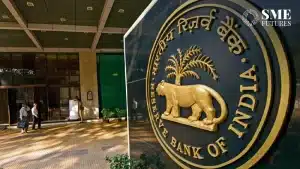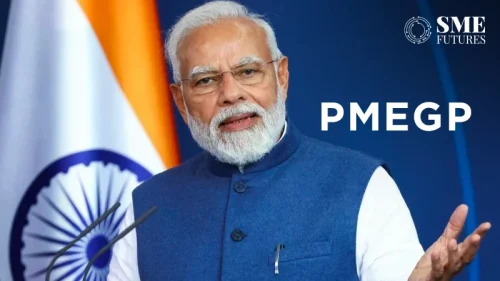As we stand on the cusp of a financial transformation in India, the landscape for cash flow-based financing has never looked more promising. With Prime Minister Modi’s vision of Viksit Bharat – a developed India, the role of MSMEs has never been more important. If India is to grow to a $5 trillion economy, MSMEs will be a crucial driving force that needs more support. This presents an incredible opportunity for innovative financial models like cash flow-based financing which prioritise accessibility, fairness, inclusion, and transparency.
Addressing the credit gap with cash flow-based financing
India’s MSME sector, which comprises over 63 million businesses and contributes approximately 30% to the country’s GDP, is the backbone of the economy. However, despite their economic significance, MSMEs continue to face a significant credit gap. According to Michael Debabrata Patra, Deputy Governor, Reserve Bank of India (RBI), India’s MSMEs have a finance demand of over USD 1.9 trillion, with USD 1.5 trillion being debt-based demand. Discounting the businesses that are unserviceable or prefer informal options, there still exists a USD 530 billion financing opportunity for banks, fintechs, and NBFCs collectively.
For most MSMEs, long-term loans are not suitable for meeting their short-term working capital needs. These small business owners are under constant business pressure and prefer access to funding quickly. Unfortunately, traditional financial products offered by banks aren’t able to accurately measure the creditworthiness of thin-file or new-to-credit customers who often don’t have the vintage, credit history or collateral to offer.
This is where cash flow-based financing has the potential for transformative impact. Platforms like GetVantage are able to analyse traditional and non-traditional data sets including cash flows and not just assets to comprise a more accurate and current view of a business’ financial health. This more inclusive approach means that businesses aren’t turned away purely based on a credit score or lack thereof and additional signals like real-time cash flow and future revenue potential are also taken into consideration. This digital-first, data-driven approach also means that the entire process is significantly quicker, and decisions are unbiased.
In fact, cash flow-based financing products are being rapidly introduced by more industry participants as the popularity and adoption of this model grows. Just last week, newly appointed SBI chairman C.S. Shetty indicated that SBI would be moving from collateral-based lending to cash flow-based lending, backed by a guarantee, for all MSME loans up to INR 5 crore.
The role of digitalisation in expanding financial access and MSME growth
The ongoing digitalisation drive and the government’s focus on MSME growth underscore a significant shift in traditional financing paradigms. This growth is driven by factors such as the increasing formalisation of businesses, the rise of digital platforms, and government initiatives like the Emergency Credit Line Guarantee Scheme (ECLGS) and Credit Guarantee Fund Trust for Micro and Small Enterprises (CGTSME), which have collectively enhanced credit access for MSMEs. This highlights the immense potential for addressing this underserved market with better, more streamlined working capital access.
The credit landscape is also being reformed with innovative embedded finance and digital infrastructure, offering unprecedented access to capital in a way that aligns with the specific needs of businesses.
Embedded Finance for example seamlessly integrates financial services into non-financial platforms enabling MSMEs to access funding directly within the ecosystems they operate in, significantly simplifying the borrowing process. This model is rapidly gaining traction, as it not only streamlines access for businesses but also aligns with the government’s broader push towards digitalisation and financial inclusion. Initiatives like the Open Credit Enablement Network (OCEN) which further build on and strengthen the India stack are accelerating this transformation by creating a standardised financing infrastructure that enables credit to flow more efficiently to small businesses across the country. As this ecosystem continues to evolve, embedded finance is set to play an increasingly central role in empowering MSMEs, enabling them to scale and contribute to India’s economic growth.
Sectoral Growth Opportunities for MSMEs
This transformation isn’t happening in isolation. It’s supported by the robust growth potential of several key SME sectors in the country. The government’s Atmanirbhar Bharat (Self-Reliant India) initiative has played a crucial role in boosting domestic industries, with particular emphasis on sectors such as manufacturing, textiles, and electronics. These sectors have seen substantial investments, driven by policies like the Production-Linked Incentive (PLI) schemes, which aim to make India a global manufacturing hub.
Among them, the food processing industry stands out with an average annual growth rate of 7.26% over recent years. This sector is being bolstered by initiatives like the PM Formalisation of Micro Food Processing Enterprises (PMFME) Scheme, which aims to enhance the competitiveness of micro-enterprises through financial and technical support. The food processing industry, which contributes nearly 10% to India’s GDP in agriculture and employs around 1.93 million people, is poised for exponential growth.
The healthcare sector is another area of significant growth, with the market expected to nearly double, reaching around $193.59 billion by 2032. This surge is driven by increasing demand for healthcare services and substantial government support, including an allocation of over ₹90,000 crores for health infrastructure in the latest budget. MSMEs in these areas are well-positioned to benefit from the heightened focus on health and wellness.
Moreover, the IT services sector continues to be a crucial contributor to India’s economic landscape, benefiting from the country’s vast pool of skilled professionals and accelerating digital adoption. These sectors exemplify the high potential for MSMEs to not only thrive but also become key drivers of the economy, supported by a conducive policy environment and growing market demand. India’s IT and software services industry, which is projected to reach $350 billion by 2025, remains a global leader, driven by a strong demand for digital transformation services across industries.
Additionally, sectors like renewable energy, particularly solar and wind energy, are emerging as promising areas for MSMEs. The Indian government’s ambitious target of achieving 450 GW of renewable energy capacity by 2030 is creating substantial opportunities for MSMEs involved in the manufacturing, installation, and maintenance of renewable energy systems. The adoption of cleaner and sustainable energy solutions is not only beneficial for the environment but also opens up new avenues for MSMEs to contribute to the country’s energy security.
A bright future for MSMEs
In conclusion, the convergence of favorable policy signals, technological advancements, and the rise of embedded finance solutions position India’s MSMEs at a pivotal point in their growth journey. As India’s financial ecosystem continues to evolve, the role of cash flow-based financing will become increasingly central in providing MSMEs with the capital they need to navigate challenges and seize opportunities. GetVantage is committed to playing a leading role in this evolution, ensuring that businesses across these high-potential sectors can access the capital they need to scale, innovate, and contribute to India’s vision of becoming a developed nation. As we look to the future, our focus remains on integrating seamlessly with customer experiences, supporting regulatory frameworks, and fostering a more dynamic and equitable financial ecosystem.











